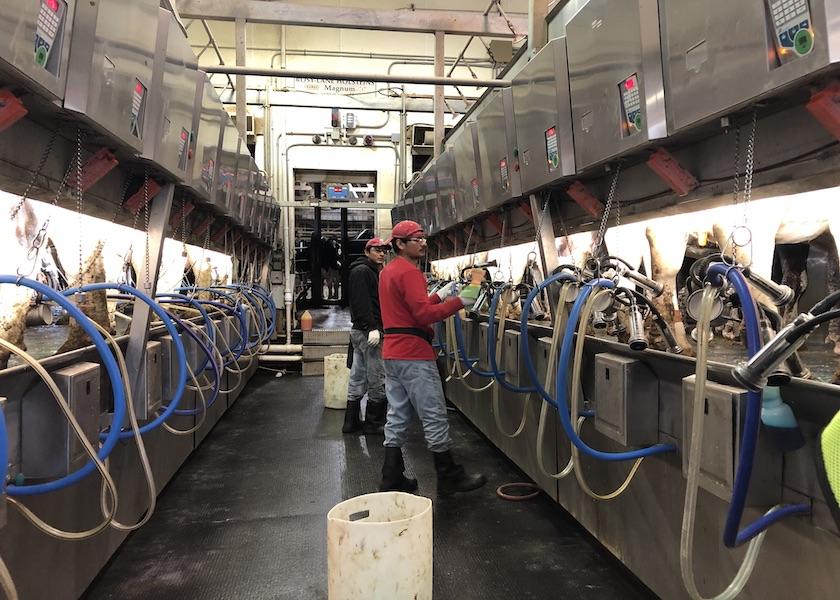Use a Detailed Critique of the Parlor to Help Dairy Producers Boost Profits

As you look for ways to enhance your business with dairy producers, consider what’s going on in the milking parlor, advises Emily Wilmes, Extension educator, University of Minnesota.
Installing new technology or hiring an extra hand is one way producers might be able to increase efficiency, but those are significant out of pocket investments. Instead, do a critique of the parlor with your clients and see how you can identify management practices that can enhance productivity.
Here are some ideas that can help you in the process, says Wilmes:
Think about the environment of the parlor itself.
Is the client’s parlor a place cows want to go? Is it clean? Is it calm and inviting? Things to consider in the parlor include cleanliness, noise levels and light.
1. A clean parlor will help manage environmental pathogens and help keep cows and milkers healthy.
2. A quiet, calm parlor helps stimulate milk letdown and reduce potential teat damage of milking machines pumping when little milk is coming out.
3. Loud music or milkers yelling may cause adrenaline release in the cows, which prohibits milk letdown.
4. Lighting in a parlor is often overlooked but shouldn’t be underestimated.
5. A well-lit parlor benefits the cows, as they like to clearly see where they are going and what’s going on.
6. It also benefits employees, as they can see the udder well and ensure its cleanliness.
7. Good lighting can also aid in the visual examination of milk when stripping the udder during prep.
Think about the management of the parlor.
How are cows brought in? How are they prepped for milking? How long does it all take? The flow of the parlor matters, from the moment that the producers’ pump turns on to the moment it turns off.
1. Cows should be brought in promptly while still allowing them to move at a comfortable pace.
2. Consider grouping cows by milking speed, or, at the very least, keep the slowest milkers until the end.
3. While prepping cows, are all milkers (if there are multiple) doing the same thing? Is the prep pattern always the same? Is it timely?
4. A quick review of important milking preparation times:
o The teat skin surface requires 10-20 seconds of stimulation for optimum milk letdown
o Teat dip should be on the teats for 30 seconds to effectively kill bacteria on the teat surface
o Prep-lag time or the time it takes from initial stimulation to attachment of the milking machine should be 60-120 seconds
5. Preparation of cows in a timely manner that allows for proper stimulation and contact time is crucial to a well-run parlor. It also has a direct impact on parlor throughput, which is especially important in herds that run the parlor nearly 24 hours a day.
7 Things to Know or Do about BRD
Sustainability is not Going Away. What are You Going to do With It?







